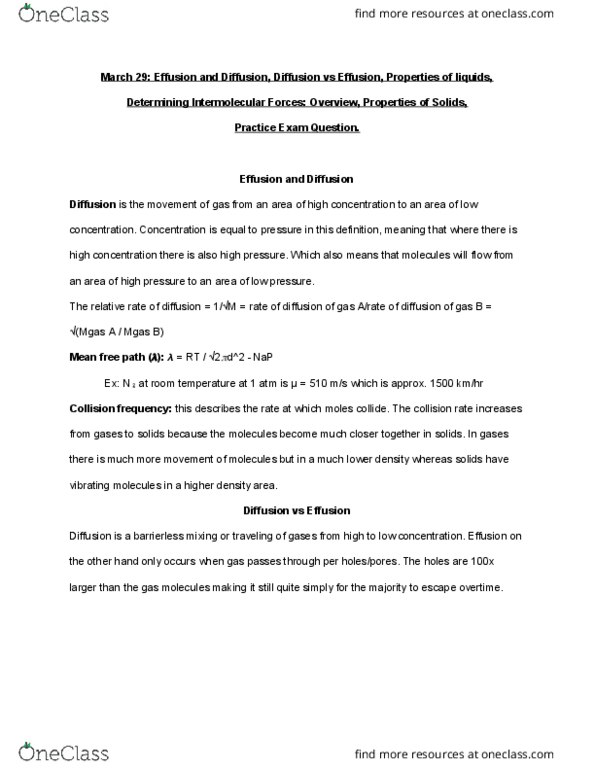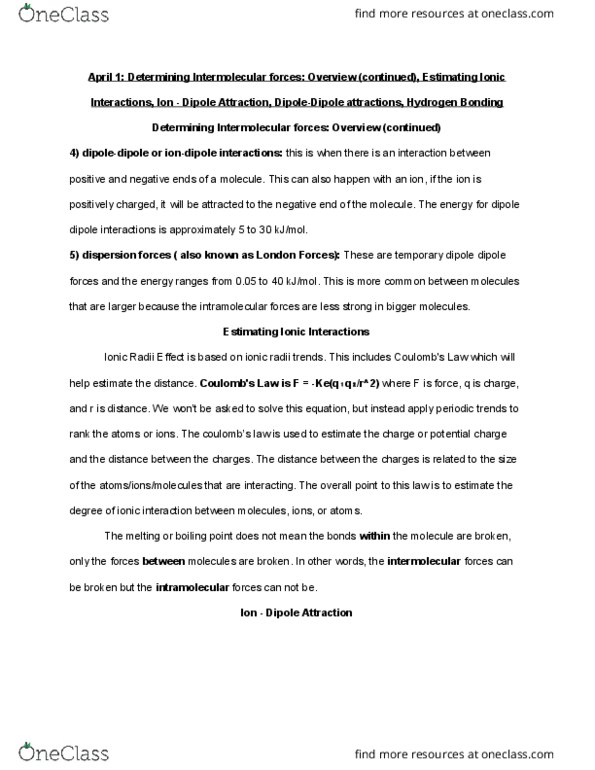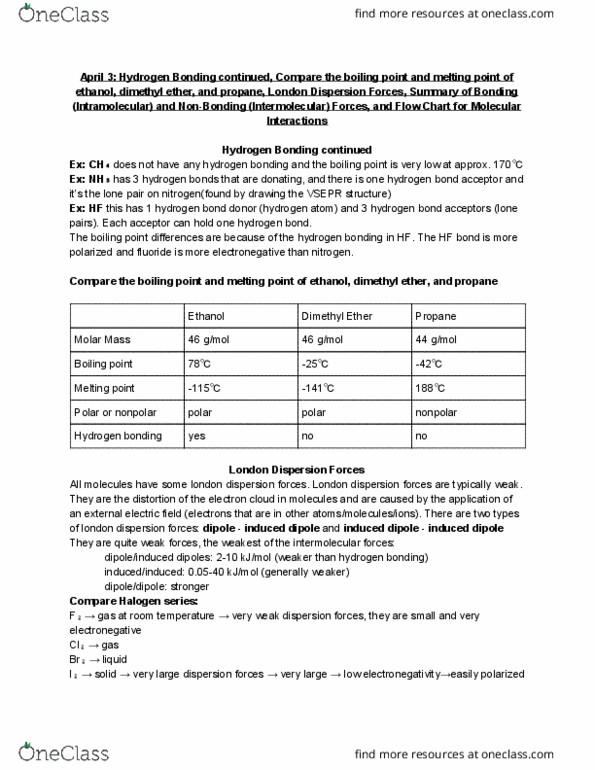CHEM101 Lecture Notes - Lecture 37: Ionic Radius, Ionic Bonding, Hydrogen Bond
CHEM101 verified notes
37/41View all
Document Summary
April 1: determining intermolecular forces: overview (continued), estimating ionic. Interactions, ion - dipole attraction, dipole-dipole attractions, hydrogen bonding. Determining intermolecular forces: overview (continued: dipole-dipole or ion-dipole interactions: this is when there is an interaction between positive and negative ends of a molecule. This can also happen with an ion, if the ion is positively charged, it will be attracted to the negative end of the molecule. The energy for dipole dipole interactions is approximately 5 to 30 kj/mol: dispersion forces ( also known as london forces): these are temporary dipole dipole forces and the energy ranges from 0. 05 to 40 kj/mol. This is more common between molecules that are larger because the intramolecular forces are less strong in bigger molecules. Ionic radii effect is based on ionic radii trends. This includes coulomb"s law which will help estimate the distance. Coulomb"s law is f = -ke(q q /r^2) where f is force, q is charge, and r is distance.




